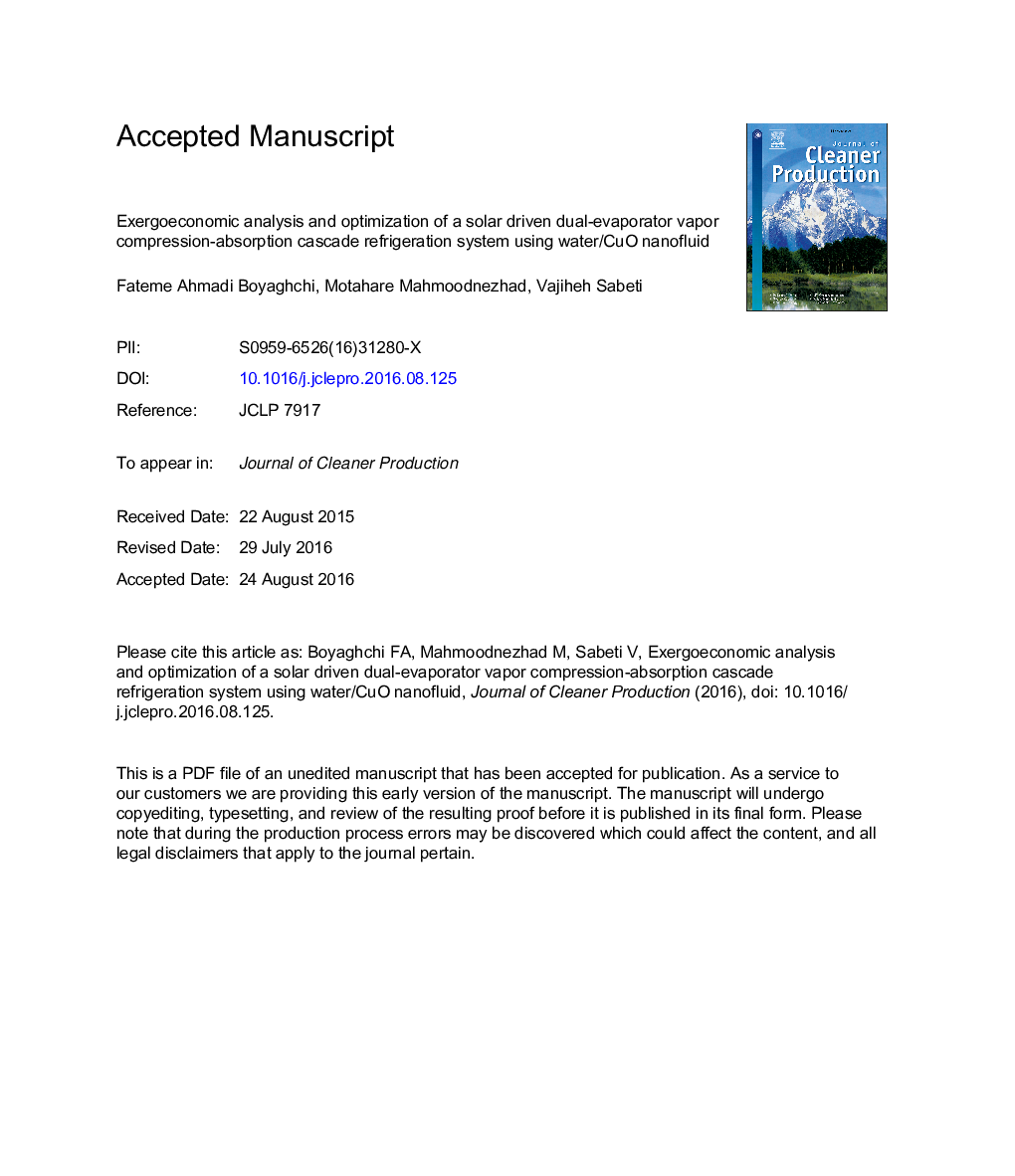| کد مقاله | کد نشریه | سال انتشار | مقاله انگلیسی | نسخه تمام متن |
|---|---|---|---|---|
| 8100710 | 1522113 | 2016 | 47 صفحه PDF | دانلود رایگان |
عنوان انگلیسی مقاله ISI
Exergoeconomic analysis and optimization of a solar driven dual-evaporator vapor compression-absorption cascade refrigeration system using water/CuO nanofluid
دانلود مقاله + سفارش ترجمه
دانلود مقاله ISI انگلیسی
رایگان برای ایرانیان
کلمات کلیدی
موضوعات مرتبط
مهندسی و علوم پایه
مهندسی انرژی
انرژی های تجدید پذیر، توسعه پایدار و محیط زیست
پیش نمایش صفحه اول مقاله

چکیده انگلیسی
In this paper, a novel cascade refrigeration system integrated with flat plate solar collector is modeled and optimized. While LiBrH2O is applied as fluid pair in cascade absorption section, R134a, R1234ze, R1234yf, R407C and R22 fluids are applied in the vapor compression section and the water/copper oxide (CuO) nanofluid is applied as the heat transfer medium inside the collector subsystem. Nanoparticles volume fraction, mass flow rate of strong solution, low pressure of absorption section, collector tilt angle as well as solar collector area are selected as design parameters while the daily thermal and exergy coefficients of performance and total product cost rate are selected as three objective functions. Non-dominated Sort Genetic Algorithm-II (NSGA-II) is individually employed to achieve the final solutions of the system for the best working fluids from the thermodynamic and thermoeconomic viewpoints. The proposed system modeling represents that R134a is the best fluid from the energy and exergy viewpoints with daily energy and exergy coefficients of performance of 9.340% and 0.5815%, respectively and R1234ze with the total product cost rate of 7016 $/year is the best working fluid from the exergoeconomic viewpoint. The optimization results indicate that R134a with 2.4% and 2% improvement of the daily energy and exergy coefficients of performance, respectively, relative to the base case needs minimum collector area with amount of 680Â m2 among the other working fluids. In addition, R1234ze with the total product cost rate reduction of 2.4% requires maximum nanoparticles and collector area with values of 0.041 and 702.01Â m2, respectively.
ناشر
Database: Elsevier - ScienceDirect (ساینس دایرکت)
Journal: Journal of Cleaner Production - Volume 139, 15 December 2016, Pages 970-985
Journal: Journal of Cleaner Production - Volume 139, 15 December 2016, Pages 970-985
نویسندگان
Fateme Ahmadi Boyaghchi, Motahare Mahmoodnezhad, Vajiheh Sabeti,